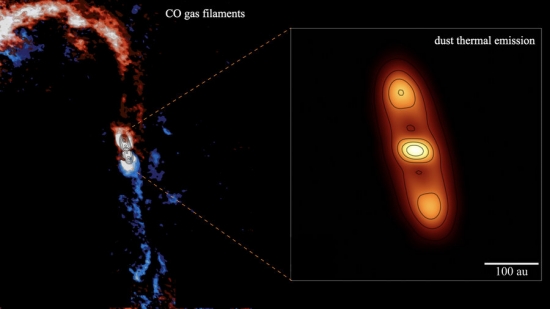
How the Solar System came into existence with the Sun at its centre, surrounded by a family of planets, dwarf planets, asteroids, and more, has always been seen as an evolutionary and linear process. First, there was a nebula, the gas cloud that under the force of gravity began to concentrate a significant mass at its centre. Eventually, the mass become so highly compressed that it ignited to form the Sun. The chain reaction that followed scattered the heavier matter and elements to form the planets, dwarf planets, asteroids, etc.
New research, however, indicates that this model is wrong. A paper appearing in Nature this month, entitled “Rapid formation of exoplanetesimals revealed by white dwarfs” disputes the timing of the formation of planets in solar systems. Using white dwarf observational data, it argues that planets formed within the first few hundred thousand years after the nebula collapse and before the ignition that formed a star. Instead of one begat the other, the paper states the formation of both stars and planets was concurrent.
Why study white dwarf stars? Because they are the remnants of stars like our Sun (too small to ever go supernova) and are a laboratory to understand how solar systems form. Stars that end up becoming white dwarfs give astronomers a picture of how heavy and lighter elements found in both stars and planets get distributed. Previously, it was thought that only stars produced heavier elements. But the remnant systems around white dwarfs show that heavier elements were in abundance in collapsing nebulas accreting into planetesimals and protostars concurrently.
The image you see at the top of this article supports this hypothesis. It shows an evolving solar system 600 light-years away from Earth, called Barnard 59. You can see in the magnified area of this nebula two protostars and a protoplanet all forming concurrently.
What are the forces behind the formation of planets and stars? What other than gravity plays a role? It turns out that radioactivity is the initiator of planet and star formation and that gravity plays a secondary role. Stars and planets form when short-lived radioactive isotopes produce intense heat causing rapid accretion of materials. Only, later on, does gravity play its part. A good example of when gravity came into play can be seen here with Earth. Our planet is multi-layered. The accretion that radioactivity started was sorted out by gravity later on with the heavier elements moving to the planet’s core, and the lighter ones rising to the surface.
The research behind this new hypothesis has involved a team of astronomers from the Cambridge Institute of Astronomy, the University of Oxford, Ludwig-Maximilians-Universitat, the University of Groningen, and the Max Planck Institute for Solar System Research who studied what are described as “polluted white dwarfs” left over from what were once systems similar to ours.
Amy Bonsor of the Cambridge Institute of Astronomy describes white dwarf systems as “amazing laboratories” and “celestial graveyards.” They are where our Solar System is headed billions of years in the future as the Sun ages and sheds its outer layers to eventually become a white dwarf before winking out.
The research described in Nature used ground-based spectrographs which focused on an isotope of aluminum, 26AI found in white dwarf systems. The data collected shows that this radioactive isotope was instrumental in the melting and accretion of the stellar and planetary masses that became solar systems.
Bonsor and her research colleagues conclude that it is the “radioactive melting process” that is the “ubiquitous mechanism” behind star and planet formation which suggests that Earth formed much earlier than astronomers previously thought. Rather than our Sun being the parent of Earth and the other planets, they are in fact, siblings.








